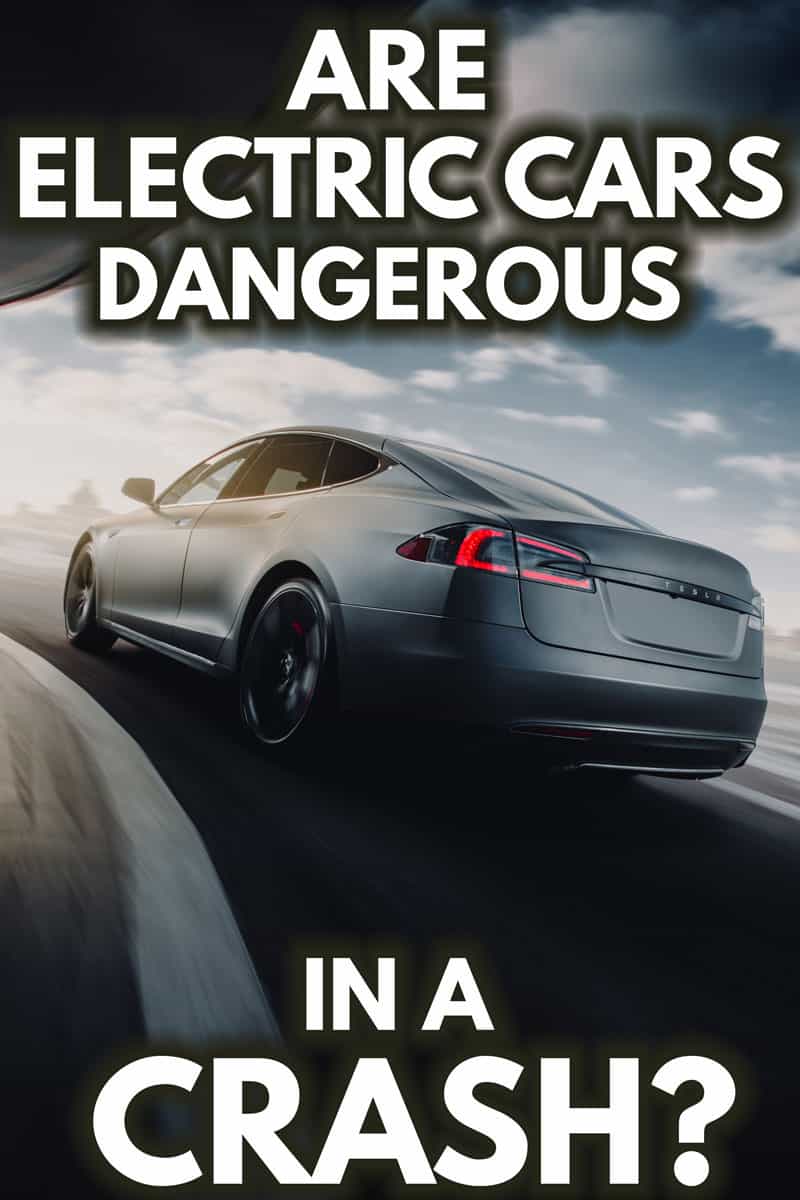In recent years, electric vehicles (EVs) have surged in popularity, touted as the eco-friendly answer to our daunting climate crisis. But amidst their many benefits, a critical question looms: are electric cars more dangerous in a crash? This playful provocation invites a thorough exploration into the fundamental aspects of electric vehicles and their safety in collision scenarios, juxtaposed with their gasoline counterparts.
To tackle this question head-on, it’s imperative first to analyze the inherent structural differences between electric cars and traditional vehicles. For instance, the architecture of an electric vehicle is largely dictated by its battery placement. The heavy battery packs, often located low in the chassis, can enhance the car’s stability, potentially reducing rollover incidents. Conventional vehicles, with their heavier front ends and lighter back ends, can exhibit a propensity to flip in certain circumstances. This peculiarity raises an inquisitive point: can the very design that offers these advantages paradoxically pose its own set of risks?
Moreover, we must also consider the crashworthiness of electric vehicles, a term that accurately reflects a vehicle’s ability to protect its occupants during a collision. Many electric cars are crafted with advanced materials and cutting-edge safety features, such as crumple zones and reinforced passenger cabins. However, the question remains: do these designs sufficiently mitigate the risks associated with electric vehicle batteries, particularly lithium-ion cells? A unique challenge arises here. In the event of a crash, the potential for battery rupture can lead to fires, a concern not as prevalent in traditional combustion engines. Yet, it is essential to scrutinize whether this hazard is as substantial as it seems.
Statistics shed light on this phenomenon. Research indicates that electric vehicles tend to have lower rates of serious injuries compared to their petrol-powered counterparts. Two fundamental reasons support this conclusion. First, EVs are often equipped with sophisticated safety technologies, including automatic braking, lane assist, and collision avoidance systems, which can significantly reduce the incidence of crashes in the first place. Secondly, the very weight distribution of these vehicles, thanks to their batteries, contributes to increased controllability, potentially enhancing driver response during adverse conditions. Could it be, then, that the advantages of electric vehicle design far outweigh the potential dangers in a crash?
Additionally, driving an electric vehicle invokes a different driving experience. Instant torque provides an exhilarating acceleration that can be a double-edged sword; while it may allow for swift escapes from potentially hazardous situations, it can also tempt drivers into careless driving behaviors. This risky dynamic raises another question: does the thrill of driving an electric car inadvertently encourage less cautious driving habits, ultimately contributing to a higher chance of collisions?
Batteries, undeniably, are a focal point of concern when discussing EV safety. The prospect of battery fires post-collision has garnered attention. A rather dramatic question then arises: are these incidents as alarming as media portrayals suggest? While it is true that lithium-ion batteries can catch fire, the actual occurrences are statistically low. Innovations in battery technology and design continue to evolve, aiming to curb risks while maintaining efficiency and performance. In fact, leading manufacturers have developed superior cooling systems and protective casings that act as formidable barriers against fire hazards. This reinforces the notion that ongoing research and advances in technology can significantly ameliorate potential dangers.
Moreover, let’s not overlook the environmental aspect of crashes involving electric cars. The end-of-life management of battery materials poses a challenge of its own. In the unfortunate event of a severe crash, the disposal and recycling of battery components can lead to environmental concerns. Preparing for and mitigating the ecological repercussions of these materials is vital for sustainable vehicle production. And this brings us back to the original query: do electric cars necessitate a deeper examination of safety protocols that go beyond mere crash logistics?
Consumer perception plays a pivotal role in the broader discourse on electric vehicle safety. There exists a lingering skepticism among some demographics about the actual safety of EVs, stemming from lingering fears about battery risks and myths perpetuated by anecdotes of incendiary mishaps. This perception challenge invites the question: how can manufacturers and policymakers effectively communicate the advances in electric vehicle safety to appease public concerns? Building trust through transparent information and education remains crucial in promoting the widespread adoption of electric vehicles.
As we round out this exploration, it becomes clear that the notion of whether electric cars are more dangerous in a crash does not rest on a singular metric of safety. Instead, it involves a multifaceted examination of design, technology, driving behavior, and public perception. As electric vehicles transition from novelty to norms on our roads, the challenges they pose and the safety features they offer will undoubtedly continue to evolve.
So, are electric cars dangerous in a crash? The answer is intricate. While they present unique safety challenges, particularly concerning battery technology and driver behavior, they also offer numerous advantages in stability and integrated safety features. Ultimately, as both consumers and manufacturers engage in this dialogue, we inch closer to a future where electric vehicles can not only coexist but flourish alongside conventional cars, driving us toward a more sustainable and safe world.
